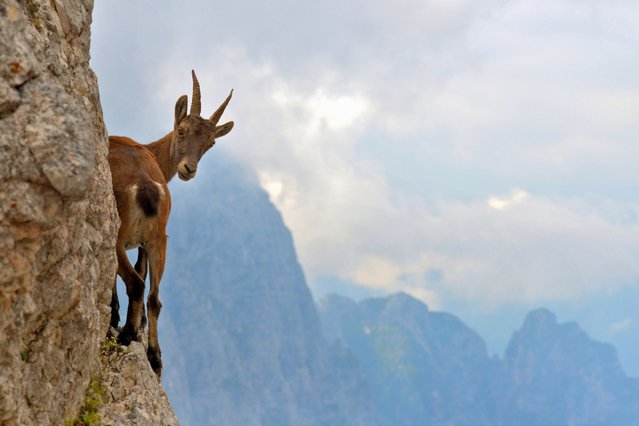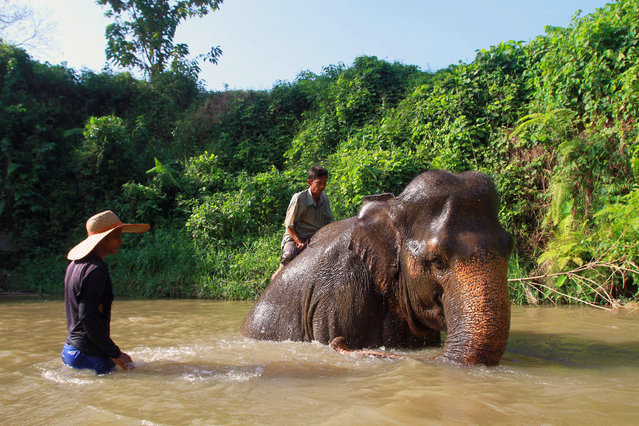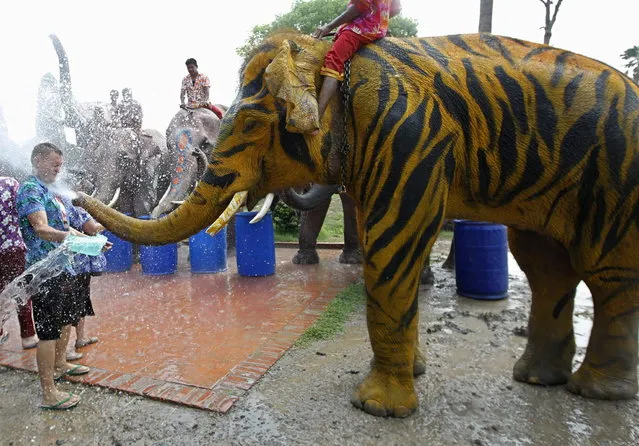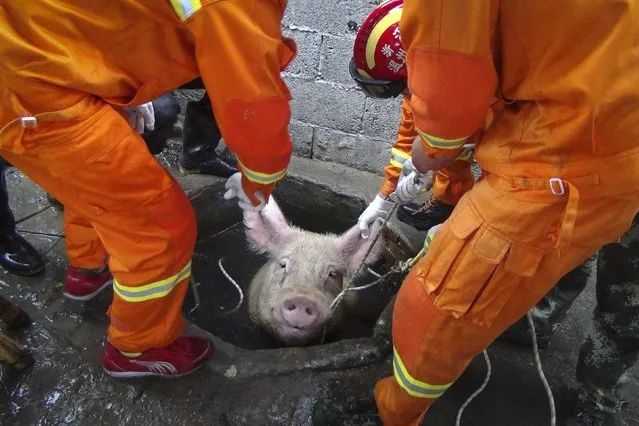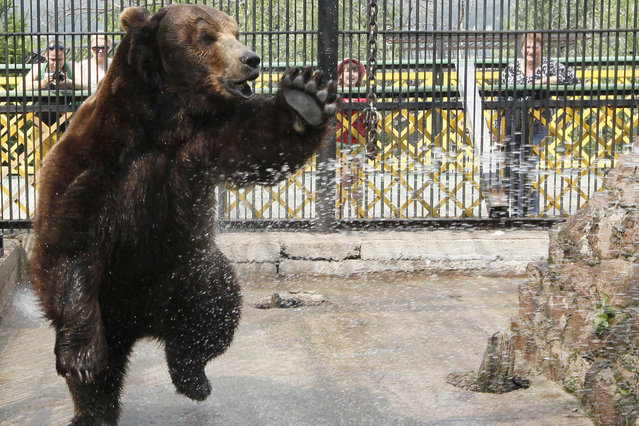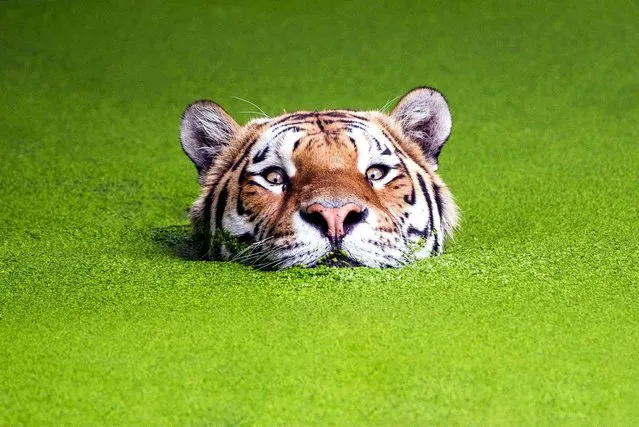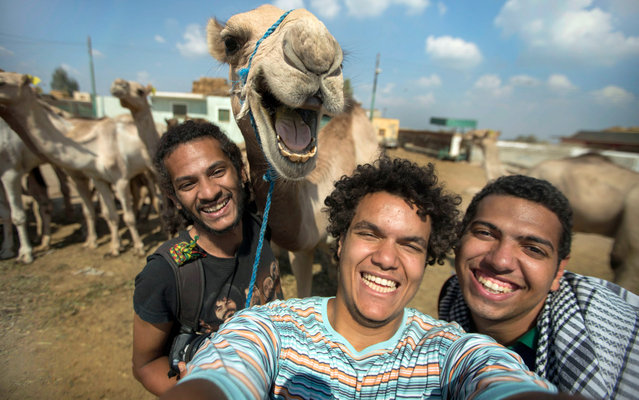
This camel clearly didnt get the hump about having its picture taken after posing for a selfie. Pictured joining in with the group photo, the hilarious photo shows the delighted desert dweller smiling happily for the camera. Captured by friends Hossam Antikka, 20, Karem Abdelaziz, 22, and Misara Salah, 24, the group spent around half an hour feeding the camel before deciding to take a snap of their new found friend. (Photo by Karem Abdelaziz/Caters News)
